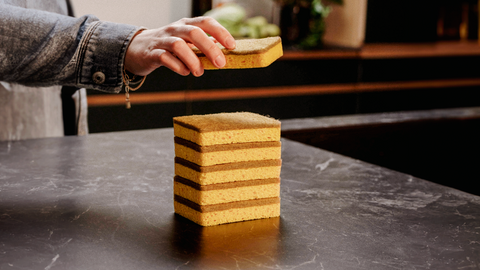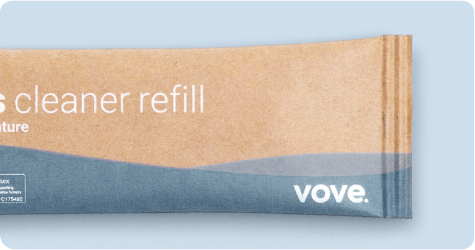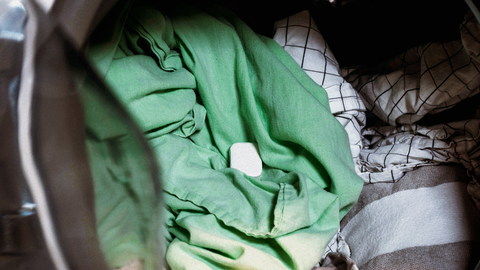Let's face it, the humble kitchen sponge is a must-have for our daily cleaning routine. But did you know that it can also be a breeding ground for billions of bacteria? Fear not, this comprehensive guide will help you navigate the world of eco sponges and non-scratch scourers to keep your kitchen sparkling clean and hygienic. So, let's dive into the fascinating realm of washing up sponges, natural sponges, and everything in between.
The Dirty Truth About Kitchen Sponges
Bacteria Bonanza
Believe it or not, your dish washing sponge could be harboring as many as
45 billion microbes
[1] per square centimeter. Even more shocking, a study found that your kitchen sponge could be home to
362 different types of bacteria [2]. That's right, you're not just scrubbing away grease and grime, you're also swiping around a microscopic army of bacteria.
The Good, the Bad, and the Ugly
While it may sound alarming, not all bacteria found on your washing sponge are harmful. Most of them are harmless and won't make you sick. However, it is still essential to practice good kitchen hygiene to avoid cross-contamination and foodborne illnesses.
A Tale of Two Zones
Another surprising fact is that studies have found that kitchens and sponges can house even more bacteria than bathrooms. This is because sponges provide the ideal environment for bacterial growth: they get wet frequently, often don't dry out properly, and collect food particles, making them a bacteria's paradise.
The Natural alternative
The Pros of Eco Sponges
Eco sponges, also known as natural sponges, offer a more sustainable and environmentally-friendly alternative to traditional synthetic sponges. Made from 100% natural materials like cellulose from wood pulp, these sponges facilitate swift drying, effectively minimizing bacterial growth and ensuring a cleaner, more hygienic kitchen space.
The Many Varieties of Eco Sponges
There are many types of eco sponges available in the market, including silicone washing up sponges, plastic scourers, dish sponges, and even compostable sponges. Each has its unique features and benefits, catering to different preferences and cleaning requirements.
The Power of Multipacks
To ensure that you always have a fresh eco sponge on hand, consider investing in washing up
sponges multipack. This way, you can replace your sponge regularly without having to run to the store every time you need a new one
.
Non-Scratch Scourers: A Gentler Approach
Why Choose Non-Scratch Scourers?
Non-scratch scourers are designed to effectively clean your dishes, pots, pans, and kitchen surfaces without scratching or damaging them. This is especially important when dealing with non-stick cookware or delicate surfaces.
Sponge Scourers for the Win
Sponge scourers combine the best of both worlds -- the soft, absorbent side of a sponge, and the scrubbing power of a scourer. These versatile cleaning tools can tackle a wide range of tasks, from wiping down countertops to scrubbing stubborn grime off pots and pans.
The Art of Sanitizing Your Sponge
Microwave Magic
To sanitize your kitchen sponge, simply wet it thoroughly, then microwave it on high for one minute. The heat generated will kill off most of the bacteria, ensuring a cleaner and more hygienic sponge.
Boiling
Another effective sanitization method is boiling your eco sponge for five minutes. This will not only kill off bacteria but also help to remove any lingering odors or sliminess.
Bleach it Away
Soaking your eco sponge in a diluted bleach solution (3⁄4 cup per gallon) for five minutes is another effective way to sanitize it. However, be sure to rinse it thoroughly after soaking to avoid any chemical residue.
Dishwasher Disinfection
Did you know you could use your dishwasher to sanitize your sponge? Just place your sponge on the top rack and run the dishwasher on the hottest and longest cycle with the option of drying. The high temperatures used in dishwashers can help kill bacteria and other microorganisms effectively.
The Importance of Regular Replacement
Regardless of your sanitization method, it is recommended to replace your kitchen sponge every one to two weeks, depending on how often you use it. Heavy users may need to replace their sponges even more frequently. Regular replacement ensures your sponge doesn't become a persistent source of bacterial contamination in your kitchen.
Reducing Cross-Contamination
In order to maintain a clean and safe kitchen environment, it is essential to practice good sponge hygiene. Always rinse and squeeze out your sponge thoroughly after use to remove food particles and excess moisture. Moreover, use different sponges for different tasks -- for instance, one for washing dishes and another for wiping surfaces.
Proper Sponge Storage
Store your sponges in a dry, well-ventilated area where they can air dry completely. Avoid keeping them in closed, damp spaces where bacteria can thrive. A dry sponge is a happy sponge!
Eco-Friendly Disposal
When the time comes to retire your old sponge, consider eco-friendly disposal methods.
Compostable sponges can be added to your compost heap or green waste bin. For non-compostable sponges, check if your local recycling center accepts them. If not, try to repurpose them for other cleaning tasks around the house before eventually discarding them.
The Final Scrub Down
In conclusion, while the humble kitchen sponge can indeed be a breeding ground for bacteria, with the right practices and products, it need not be a source of worry. Opting for eco-friendly alternatives like eco sponges and non-scratch scourers, coupled with regular sanitization and replacement, can go a long way in ensuring a clean, safe, and sustainable kitchen environment. Remember, a
clean sponge equals a clean kitchen!



